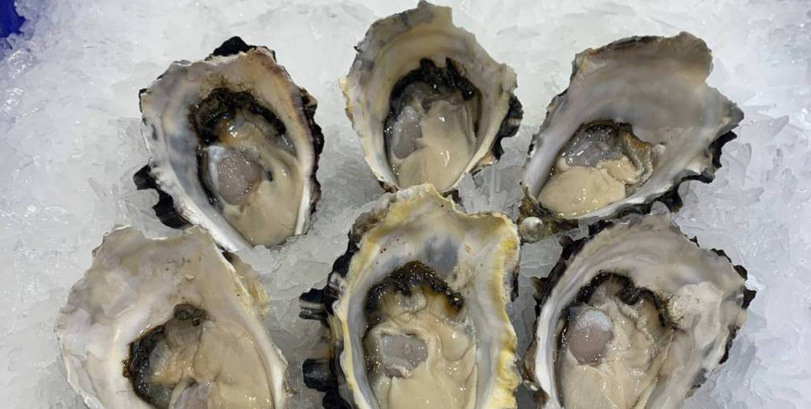RIVO – Problems Surrounding the Expanding Pacific Oyster in the Eastern Scheldt #SWI2003
History of oysters
Flat oysters have been commercially cultured in the Eastern Scheldt Estuary (The Netherlands) since 1875. After the severe winter of 1962/1963, which caused high mortality, the stock was diminished. Searching for alternatives, Dutch oyster farmers introduced the Pacific oyster to the Eastern Scheldt in 1964. The Pacific oyster is native to Japan. The species has also been introduced in several other areas, e.g. Australia, New Zealand, France, United Kingdom, Ireland, and the United States. At the time, the introduction of Pacific oysters in the Eastern Scheldt was found acceptable because offspring was not to be expected at Eastern Scheldt latitude. However, the first spatfall ( = settling of larvae on the bottom) on dike feet and jetties was recorded in 1976, and political pressure stopped the importation of Pacific oysters in the following year. A second larval outburst in 1982 definitely settled wild Pacific oysters in the Eastern Scheldt waters, and oyster banks on intertidal (= area falling dry at low tide) and subtidal (= area under the low water line) areas have been growing ever since.
Why are Pacific oysters a problem?
One of the main problems in the Eastern Scheldt concerning the expansion of Pacific oysters is the potential interaction with commercially exploited species like cockles, blue mussels, and cultivated oysters. Wild Pacific oysters can compete with these commercial species for food and space. Next to potential commercial losses due to a decline in shellfish quality, this competition for food and space can also affect the food availability and food quality for water birds, who mainly feed on mussels and cockles.
Questions
We would like to develop a model that can answer the following questions:
- How do oysters spread?
- Can development in the past be reconstructed?
- Can a prediction be made for the future?
- Can the spreading of oysters be stopped? How?
Development
Although the expanding distribution of Pacific oysters in the Netherlands has been recognized as a possible problem, an oyster survey was not conducted until 1999 when RIVO performed an oyster survey in the Eastern Scheldt. In order to reconstruct from the situation in the past, aerial photographs of 1980 and 1990 were contributed by RIKZ and used by RIVO to identify oyster fields. Together with the oyster map of 2002, they give an impression of the development of intertidal Pacific oysters in time and space.
More Information
The Eastern Scheldt
The Eastern Scheldt is situated in the South West of the Netherlands. It is a former estuary. After the storm floods of 1953, the Delta Project started, in which the Eastern Scheldt was isolated from river input by dams, and a storm-surge barrier was built on the seaward side of the estuary. The construction of this storm-surge barrier took place between 1979 and 1986.
Life cycle
Pacific oysters have separate sexes. First, they develop as males, later in their lifetime they function as females. Oysters spawn (= process
of releasing eggs and sperm into the water) from their first year on. Spawning occurs in July and August.
Conception takes place in the water phase. The concepted egg cell develops into a larva within one day. These larvae live and grow in the water phase for 15 to 30 days (pelagic period). During this period they can travel large distances, depending on the current velocities and direction. After the pelagic period larvae drop from the pelagic (water) phase to the bottom (spatfall) and try to find a suitable place to settle. Oysters prefer hard substrates on the bottom, like rocks and stones. However, they can also settle in soft, sandy sediments. Settled oysters grow from April to October, with maximum growth occurring in June. The maximum age Pacific oysters can reach is still unknown, but they seem to reach the ages of 20 to 30 years.
Feeding habit
Oysters are filter feeders, which means they filter the seawater and select particles they can use as feed. Algae are the most important source of food. Food activity is defined in the clearance rate, which is the volume of water cleared of particles per time unit. Clearance rates of Pacific oysters are well researched, and depend on a large number of variables. Average clearance rates from several studies vary between 2 and 10 l/h/g.

